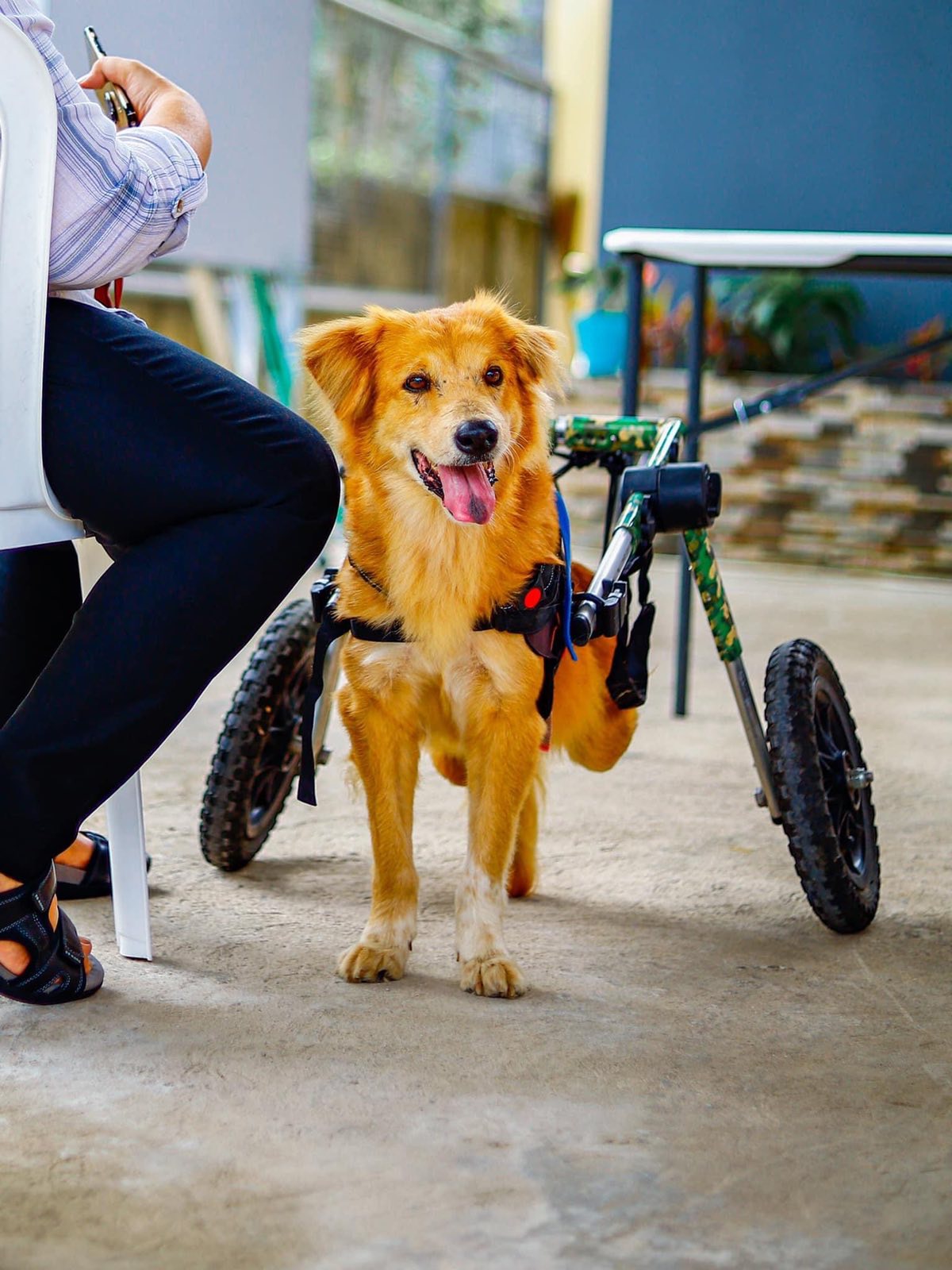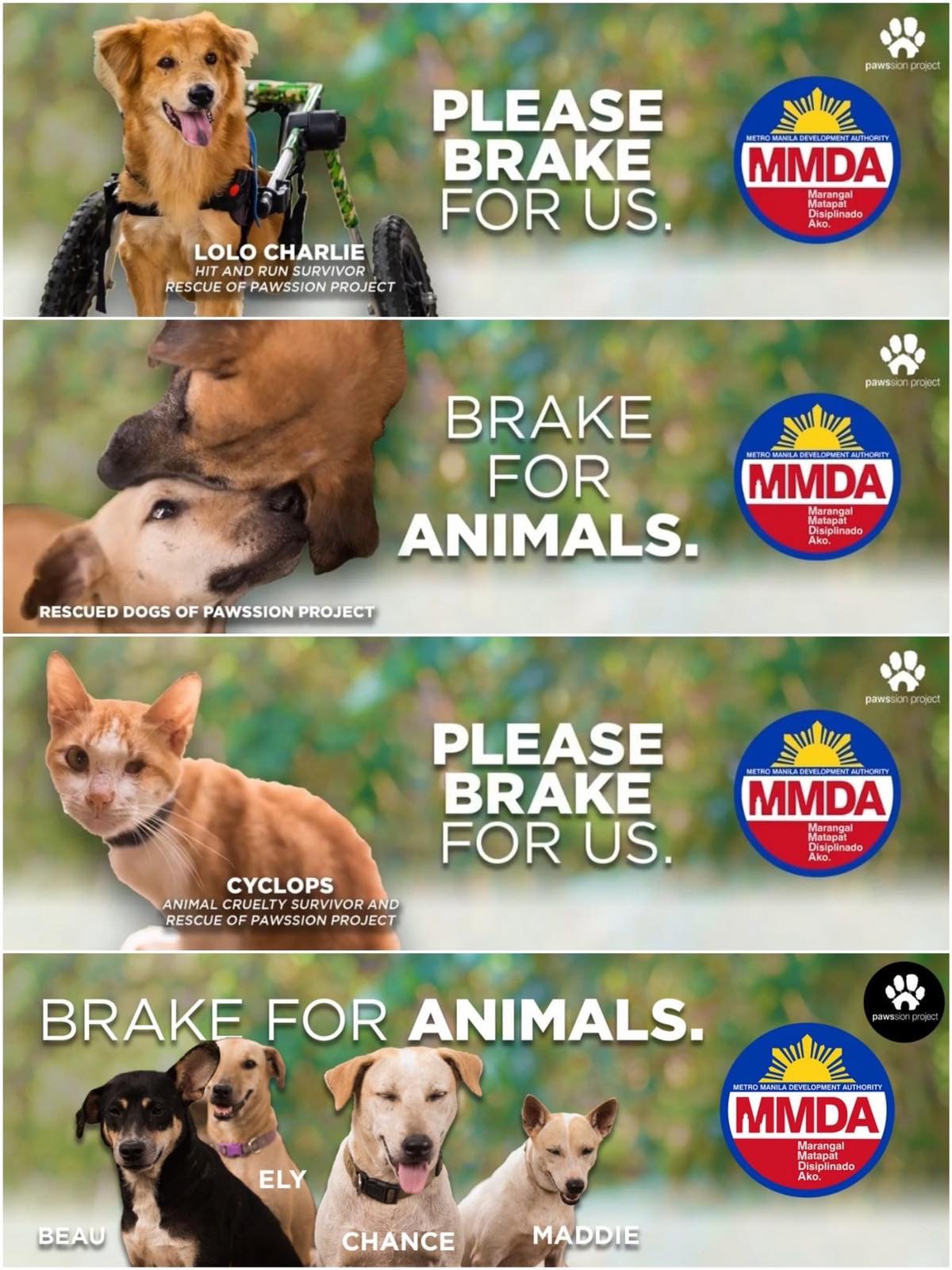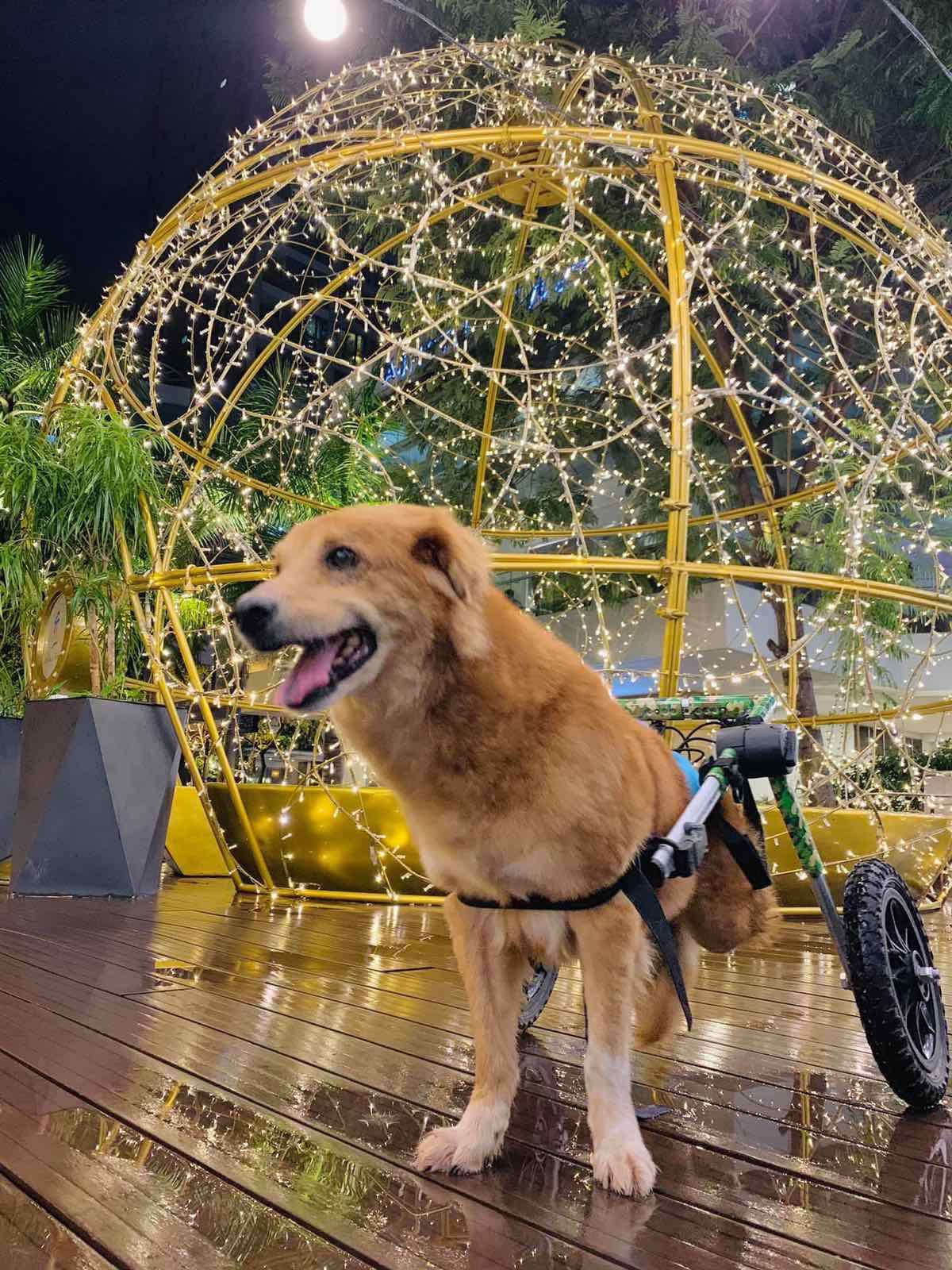The story behind the 20+ billboards on EDSA pleading for you to be kind to animals
His name is Charlie.
When they rescued him in Tagaytay last year, the dog had volcanic ash in his mouth and, as vets would later discover, inside his stomach too.
One of 12 million stray animals in the country, he was abandoned by his owners, became malnourished roaming the streets, and then he got hit by a car whose driver didn’t stop to take him to the vet.
As if that wasn’t enough suffering, Taal volcano erupted.
Charlie lost the function of his hind legs from the hit-and-run but did not require amputation. In short, his rear part became paralyzed. His rescuers didn’t think he would actually make it. Even house pets that are well fed and adored by their owners rarely survive a hit-and-run—what more an abandoned, unfed, tired and aging dog?


His name was Kabang. He was also hit on the road by a motorcycle as he jumped in front of his owner’s nine-year-old daughter and her three-year-old cousin as they were crossing a street in Zamboanga.
Kabang’s injuries were so extensive he lost part of his snout but his owner Rudi Banggal refused to have him euthanized. After Philippine media ran stories on the heroic dog, a nurse in the US started fundraising for his surgery and he was flown to California, where it was discovered he also had cancer and began chemo treatment. Kabang died of old age in 2021.
These are just two of thousands of dogs injured on Philippine roads every day when drivers don’t brake for animals.
Charlie was an abandoned dog that was rescued by the nonprofit Pawssion Project Foundation, founded by Malou Perez in 2018; Kabang was a beloved rescue dog when the accident happen.
Perfect medium and message

If you happen to be on EDSA in the past two weeks, you would have probably seen Charlie, now on a wheelchair for dogs, as one of the faces of the campaign “Brake for Animals.”
In an interview with PhilSTAR L!fe, Malou Perez says Pawssion Project Foundation alone gets about 20 reports of hit and run dogs every single day. “When we get to the accident site, most of the time the dogs have already died.”
Brake for Animals is one of two campaigns they launched this year with the help of Rep. Ronnie Ong of the partylist Ang Probinsiyano and the MMDA. The second campaign is Be Kind to All Animals.
There are more than 20 billboards and LED boards on both sides of the highway with the corner of Muñoz Ave. as the farthest in the north and Buendia in the south.

Malou says Rep. Ong has been an ally of her foundation since the beginning. “We’ve been mounting this campaign for years but only on social media. As a nonprofit, we don’t have the funds for billboards or advertising. He connected us with the MMDA and they helped us take our campaign to EDSA.”
It is one of the best animal welfare campaigns we have ever seen and its medium and location are perfect—on this 12-lane highway that is a symbol of the country’s progress and its demise.
It is also a symbol of the Filipino’s worst traits—impatient, uncaring, entitled and selfish on the road.
Changing LTFRB’s rules on dogs on public transpo
When news outlets reported of a dog (in a crate/carrier) that a bus company put in the luggage compartment—which obviously has to be closed during the trip thus cutting oxygen supply—animal welfare advocates were outraged.
The company actually had the law (or in this case the LTRFB) on its side thanks to an old memorandum.
“Hindi naman puwede yon, mamatay sila sa sobrang init,” she says. “It was so stupid for the law to say public transportation allows animals pero sa compartment ilalagay. Kaya naman bayaran ng owner ang extra seat, and naka crate naman sila.”
Malou says that with the help of Ong, they went to the LTFRB—the agency that regulates and implements guidelines and laws on public transportation—and pleaded their case on behalf of animals.
“This was one of the things that we were able to ‘fix,’ the guideline was revised,” she says.
What about a partylist to fight for animal welfare? There’s none, she says. “Ang nakakalungkot may politics din dito and the groups don’t see eye to eye.”
“But that’s what we need because representation in Congress means access to government funding for animal pounds, shelters, neutering and spaying of strays.”
A single girl with 500 dependents
Born in Bacolod, Malou grew up loving animals. Today she has about 50 dogs while the foundation is providing shelter for 500 rescue dogs and cats in three locations (Victoria, Bacolod and Bulacan).
At 31 years old, Malou says she’s single when asked if she has children. “But I have 500 dependents.”

The unloved and abandoned Charlie, now called “Lolo Charlie,” is the foundation’s mascot of sorts and lives in their headquarters in Manila with some volunteers.
When he was rescued, vets estimated his age to be around 11 or 12. Today, he looks happy and well taken care of.
Malou’s dream is to build a home for senior dogs.
When people go to the shelter or city pound to adopt, they gravitate toward puppies and young dogs—not the old ones. They are afraid of medical costs that go with taking good care of a senior dog. Cancer, tumors, glaucoma, hip dysplasia—all of which require surgery if it can be performed at all in their advanced age—are almost certain especially if they were strays. There is also the fear of attachment to a dog that will not stay long.
I myself have taken care of two senior dogs that passed away when they were 15 and 10. The former developed tumors in her stomach and a second operation was not possible. In her old age, her eyes became glazed and she lost all her teeth except for two. I would carry her from the floor to bed, from room to room just so she would be wherever I was. The latter suffered from hip dysplasia and could not even get up to pee or eat in her final days.
When you’re caring for a senior dog, there is always that fear when the vet calls you from the hospital and says they can’t do anything more to ease the dog’s pain.
“It’s time,” they tell you and your heart drops to the floor.
No matter how it broke my heart, I had to let go.
These animals, created to be our joy when no one else is around, help us become unselfish too. It’s such a small thing to be kind to all of them in return.


